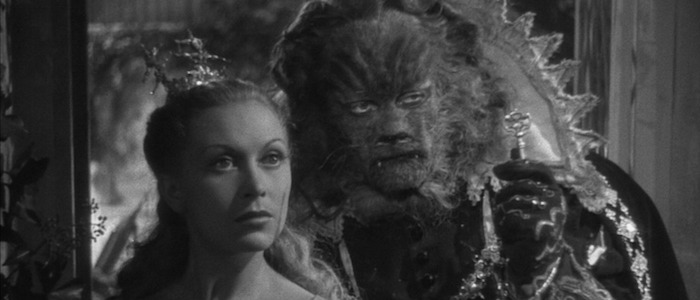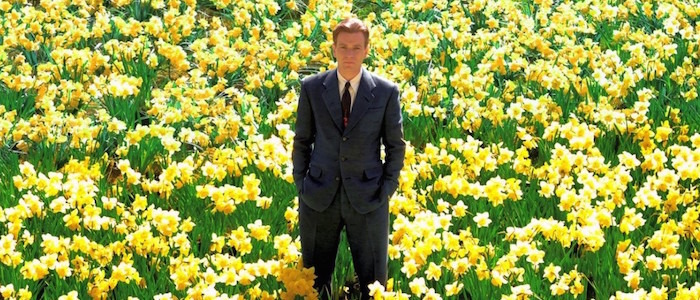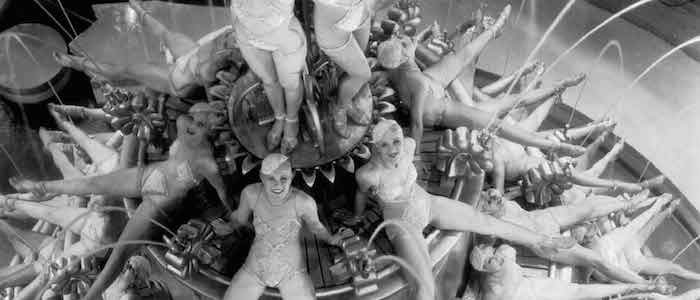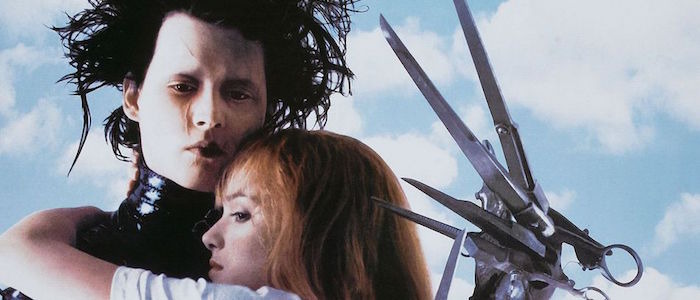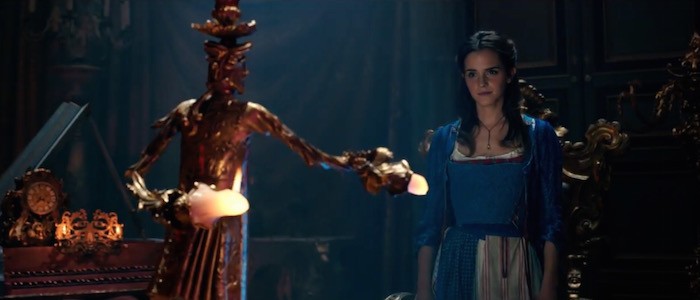'Beauty And The Beast' Movie Mixtape: 5 Films To Watch After Disney's Live-Action Remake
(Welcome to Movie Mixtape, where we find cinematic relatives and seek out interesting connections between new releases and older movies that allow us to rethink and enjoy what's in our theaters as well as the favorites on our shelf. In this edition: Bill Condon's Beauty and the Beast.)Bill Condon was nervous to make the live-action Beauty and the Beast. That's understandable. Any filmmaker would tread lightly with Disney's modern animated classic directly in the rearview mirror.
But it's not just the delightful singing teapot that makes a new adaptation risky; it's also a beloved fairytale that's older than the United States, crafted from a story several thousand years old, and remade dozens of times over. With any brand of dusty antique magic, there's got to be something special that justifies its existence. That fine balance between staying true to the spirit of the animated movie that first enchanted us while giving us something new enough to explain why we aren't simply reaching for a DVD we already own.
To make matters even more challenging, Beauty and the Beast isn't only contending with its own history, but with a cinematic history filled with other fairytales, fantasies, and musical wonders. For something with a history like this, it isn't just Angela Lansbury crooning the unlikely romance between a bookish beauty and lion-faced dandy into existence that we need to consider. Plus, you probably already have it queued up for a double-feature.
Let's take a closer look at some of the other cinematic connections to be found in Beauty and the Beast.
Harry Potter and the Prisoner of Azkaban
With Beauty and the Beast, Emma Watson is essentially reprising her most famous role. Confident, capable, with a book constantly attached to her nose, Belle is Hermione Granger after a few singing lessons. It's in Alfonso Cuaron's entry into the Harry Potter series that she first emerges into her own – doubling her coursework and still making time to give Draco a bloody nose. She also falls for a bizarre-looking beast (named Buckbeak) and sets it free through the use of magic by the end of the story. This connection isn't coincidental. Watson recognized the personal stake in a recent interview, saying, "I didn't know they were going to make Beauty and the Beast at the time I turned down Cinderella, but when they offered me Belle, I just felt the character resonated with me so much more than Cinderella did. She remains curious, compassionate, and open-minded. And that's the kind of woman I would want to embody as a role model, given the choice."
Beyond the extension of Watson's original iconic character, Azkaban also deals with the struggle of unwanted transformation similar to what The Prince experiences, presenting Remus Lupin's werewolf as an intense figure that cannot control its own rage. An animal responsible for egregious destruction and death who nonetheless requires deep sympathy and kindness from those who have every reason to shun him. Hermione (along with others) embody that life-saving sympathy as well as an educational curiosity worth celebrating. Although, you'll have to jump forward to Goblet of Fire to get Harry Potter's Quidditch-playing version of Gaston chasing her affections.
La Belle et Le Bete
If you haven't seen Jean Cocteau's 1946 classic, you owe it to yourself to seek it out not only for its stunning production design and immersive fantasy storytelling, but also see what filmmakers since then have found either vital or unnecessary to keep in other adaptations.
Disney has little reason to alter much from its animated take (beyond adding new songs and scenes), but it's fascinating to consider how the fairytale has shifted over the past 70 and 270 years. Why is Belle's father punished for being in the castle instead of stealing an enchanted rose in the Beast's garden? Why open up Belle's infatuation after she's rescued by Beast from attacking wolves instead of at a first night dinner where she's declared Beast's equal? Why omit the magic glove and key while adding in all-dancing, all-singing housewares?
That last one isn't a mystery: Disney loves its anthropomorphic sidekicks. Still, it's easy to compare Disney with Disney (and we'll have an article of our own cataloguing every small difference between the two,), but checking Disney against Cocteau provides a lens into what audiences of the past may have admired, what technological limitations existed, and what Disney has added to a tale as old as time.
Big Fish
There's rarely any discussion about Belle's relationship with her father in Beauty and the Beast, which is a shame because it's clearly a profound, complicated one. Maurice loves Belle unconditionally, and she sacrifices herself to secure his freedom. They're also both dropped into a nightmare where candelabras speak, coaches creep like spiders, and the Prince living down the road could rip their faces off with his fangs — yet they endure the break in sanity in stride after years of social ridicule by a town that mocks Belle for reading books and disregards Maurice's whirly-headed inventions.
Tim Burton's Big Fish features a similarly fraught father-child relationship, albeit one where the child thinks the parent is out of his gourd. In a sense, Ed Bloom is more like Belle, constantly searching for a more adventurous version of reality.
The movie is also rare proof that a live-action fantasy half-set in the recognizable everyday can work. It's colorful, inventive, and requires a healthy suspension of disbelief. Granted, Big Fish also benefits from constantly calling into question the tall tales at its center, winking at its audience to smirk at its fantastical elements. Beauty and the Beast doesn't have that kind of cover. It must attack its fantasy straightforwardly, selling us on a minotaur-esque mansion-dweller and a society that bursts into song at a moment's notice.
Footlight Parade
There's nothing fantastical about this James Cagney-starring musical, but director Busby Berkeley is no doubt an inspiration on Condon, paving the way for how large-scale numbers could be choreographed for film. Berkeley was able to deliver the thrills of a live performance through the limitations of the screen.
In the movie, Cagney plays a Broadway director plagued by the new popularity of cinema and forced to change his career focus from stage musicals to "prologues" that appear before a movie starts. Naturally there's a big contract to score and a big romance to navigate, and the massive dance crew manages to deliver three outstanding performances at three different New York City movie theaters, going so far as to erect a giant water fountain to perform a water ballet, all in one night. So maybe there's some fantasy going on after all.
It's a pure delight. It's also a major strand of cinematic musical DNA living in the genes of Beauty and the Beast.
Edward Scissorhands
A young, misunderstood girl living a ho-hum life in a small-minded town finds sympathy for (and ultimately falls in love with) a monstrous outcast even as a vile alpha male bro stalks her for her affection, ultimately leading an attack on the monster that congeals the town's bigotry into tragedy. Tim Burton's Edward Scissorhands is Beauty and the Beast with topiary. Instead of Belle isolated in the high castle with a captor she grows to adore, it's the Beast who must come down into the suburbs, learn about an idyllic Avon society, and weather fearful hatred on the street level. Edward and the Beast must learn to be "civilized."
Burton's film is another example of live-action fantasy that works beautifully, blending "Frankenstein" into the suburbs. It's also a fairytale, told by an old woman to her granddaughter to explain where snow comes from. Like Beauty and the Beast, it also heavily leans into the morality play of finding the good in everyone, no matter how sharp the claws.
The Mix
Hopefully, this list draws out what Beauty and the Beast owes to its predecessors (and not just the most obvious one) as well as how it stands out among a long history of adaptations, musicals, and fantasy films.
It's strange to see Watson's portrayal of a potentially pigeon-holing character overshadowed completely because the character is also toweringly iconic. Hermione may owe a lot to Belle, and now Belle, via Watson, can owe something to Hermione.
In the same way, Beauty and the Beast borrows its voice from an ancient story and a host of filmic magic-makers, but will undoubtedly add to that lineage with its own inspiring, technical song and dance.

